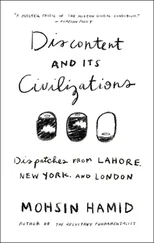Maud Goodwin - Dutch and English on the Hudson - A Chronicle of Colonial New York
Здесь есть возможность читать онлайн «Maud Goodwin - Dutch and English on the Hudson - A Chronicle of Colonial New York» — ознакомительный отрывок электронной книги совершенно бесплатно, а после прочтения отрывка купить полную версию. В некоторых случаях можно слушать аудио, скачать через торрент в формате fb2 и присутствует краткое содержание. Жанр: История, foreign_antique, foreign_prose, на английском языке. Описание произведения, (предисловие) а так же отзывы посетителей доступны на портале библиотеки ЛибКат.
- Название:Dutch and English on the Hudson: A Chronicle of Colonial New York
- Автор:
- Жанр:
- Год:неизвестен
- ISBN:нет данных
- Рейтинг книги:4 / 5. Голосов: 1
-
Избранное:Добавить в избранное
- Отзывы:
-
Ваша оценка:
- 80
- 1
- 2
- 3
- 4
- 5
Dutch and English on the Hudson: A Chronicle of Colonial New York: краткое содержание, описание и аннотация
Предлагаем к чтению аннотацию, описание, краткое содержание или предисловие (зависит от того, что написал сам автор книги «Dutch and English on the Hudson: A Chronicle of Colonial New York»). Если вы не нашли необходимую информацию о книге — напишите в комментариях, мы постараемся отыскать её.
Dutch and English on the Hudson: A Chronicle of Colonial New York — читать онлайн ознакомительный отрывок
Ниже представлен текст книги, разбитый по страницам. Система сохранения места последней прочитанной страницы, позволяет с удобством читать онлайн бесплатно книгу «Dutch and English on the Hudson: A Chronicle of Colonial New York», без необходимости каждый раз заново искать на чём Вы остановились. Поставьте закладку, и сможете в любой момент перейти на страницу, на которой закончили чтение.
Интервал:
Закладка:
One of the first patents recorded was granted to Michiel Pauw in 1630. In the documentary record the Director and Council of New Netherland, under the authority of their High Mightinesses, the Lords States-General and the West India Company Department of Amsterdam, testify to the bargain made with the natives, who are treated throughout with legal ceremony as if they were high contracting parties and fully capable of understanding the transaction in which they were engaged. These original owners of the soil appeared before the Council and declared that in consideration of certain merchandise, they agreed to "transfer, cede, convey and deliver for the benefit of the Honorable Mr. Michiel Paauw" as true and lawful freehold, the land at Hobocan Hackingh, opposite Manhattan, so that "he or his heirs may take possession of the aforesaid land, live on it in peace, inhabit, own and use it … without that they, the conveying party shall have or retain the least pretension, right, power or authority either concerning ownership or sovereignty; but herewith they desist, abandon, withdraw and renounce in behalf of aforesaid now and forever totally and finally."
It must have been a pathetic and yet a diverting spectacle when the simple red men thus swore away their title to the broad acres of their fathers for a consideration of beads, shells, blankets, and trinkets; but, when they listened to the subtleties of Dutch law as expounded by the Dogberrys at Fort Amsterdam, they may have been persuaded that their simple minds could never contend with such masters of language and that they were on the whole fortunate to secure something in exchange for their land, which they were bound to lose in any event.
It has been the custom to ascribe to the Dutch and Quakers the system of paying for lands taken from the Indians. But Fiske points out that this conception is a mistake and he goes on to state that it was a general custom among the English and that not a rood of ground in New England was taken from the savages without recompense, except when the Pequots began a war and were exterminated. The "payment" in all cases, however, was a mere farce and of value only in creating good feeling between savages and settlers. As to the ethics of the transaction, much might be said on both sides. The red men would be justified in feeling that they had been kept in ignorance of the relative importance of what they gave and what they received, while the whites might maintain that they created the values which ensued upon their purchase and that, if they had not come, lands along the Great River would have remained of little account. In any case the recorded transaction did not prove a financial triumph for the purchaser, as the enterprise cost much in trouble and outlay and did not meet expenses. The property was resold to the Company seven years later – at a price, however, of twenty-six thousand guilders, which represented a fair margin of profit over the "certain merchandise" paid to the original owners eight years earlier.
Very soon after the purchase of the land on the west shore of the North River, Pauw bought, under the same elaborate legal forms, the whole of Staten Island, so called in honor of the Staaten or States-General. To the estate he gave the title of Pavonia, a Latinized form of his own name. Staten Island was subsequently purchased from Pauw by the Company and transferred (with the exception of the bouwerie of Captain De Vries) to Cornelis Melyn, who was thus added to the list of patroons. Other regions also were erected into patroonships; but almost all were either unsuccessful from the beginning or short-lived.
The patroonship most successful, most permanent, and most typical was Rensselaerswyck, which offers the best opportunity for a study of the Dutch colonial system. Van Rensselaer, though he did not apparently intend to make a home for himself in New Netherland, was one of the first to ask for a grant of land. He received, subject to payment to the Indians, a tract of country to the north and south of Fort Orange, but not including that trading-post, which like the island of Manhattan remained under the control of the West India Company. By virtue of this grant and later purchases Van Rensselaer acquired a tract comprising what are now the counties of Albany and Rensselaer with part of Columbia. Of this tract, called Rensselaerswyck, Van Rensselaer was named patroon, and five other men, Godyn, Blommaert, De Laet, Bissels, and Moussart, whom he had been forced to conciliate by taking into partnership, were named codirectors. Later the claims of these five associates were bought out by the Van Rensselaer family.
In 1630 the first group of emigrants for this new colony sailed on the ship Eendragt and reached Fort Orange at the beginning of June. How crude was the settlement which they established we may judge from the report made some years later by Father Jogues, a Jesuit missionary, who visited Rensselaerswyck in 1643. He speaks of a miserable little fort built of logs and having four or five pieces of Breteuil cannon. He describes also the colony as composed of about a hundred persons, "who reside in some twenty-five or thirty houses built along the river as each found most convenient." The patroon's agent was established in the principal house, while in another, which served also as a church, was domiciled the domine , the Reverend Johannes Megapolensis, Jr. The houses he describes as built of boards and roofed with thatch, having no mason-work except in the chimneys. The settlers had found some ground already cleared by the natives and had planted it with wheat and oats in order to provide beer and horse-fodder; but being hemmed in by somewhat barren hills, they had been obliged to separate in order to obtain arable land. The settlements, therefore, spread over two or three leagues.
The fear of raids from the savages prompted the patroon to advise that, with the exception of the brewers and tobacco planters who were obliged to live on their plantations, no other settlers should establish themselves at any distance from the church, which was the village center; for, says the prudent Van Rensselaer, "every one residing where he thinks fit, separated far from others, would be unfortunately in danger of their lives in the same manner as sorrowful experience has taught around the Manhattans." Our sympathy goes out to those early settlers who lived almost as serfs under their patroon, the women forbidden to spin or weave, the men prohibited from trading in the furs which they saw building up fortunes around them. They sat by their lonely hearths in a little clearing of the forest, listening to the howl of wolves and fearing to see a savage face at the window. This existence was a tragic change indeed from the lively social existence along the canals of Amsterdam or on the stoops of Rotterdam.
Nor can we feel that these tenants were likely to be greatly cheered by the library established at Rensselaerswyck, unless there were hidden away a list of more interesting books than those described in the patroon's invoice as sent in an oosterse , or oriental, box. These volumes include a Scripture concordance, the works of Calvin, of Livy, and of Ursinus, the friend of Melanchthon, A Treatise on Arithmetic by Adrian Metius, The History of the Holy Land , and a work on natural theology. As all the titles are in Latin, it is to be presumed that the body of the text was written in the same language, and we may imagine the light and cheerful mood which they inspired in their readers after a day of manual toil.
I suspect, however, that the evening hours of these tenants at Rensselaerswyck were spent in anxious keeping of accounts with a wholesome fear of the patroon before the eyes of the accountants. Life on the bouweries was by no means inexpensive, even according to modern standards. Bearing in mind that a stiver was equivalent to two cents of our currency and a florin to forty cents, it is easy to calculate the cost of living in the decade between 1630 and 1640 as set down in the accounts of Rensselaerswyck. A blanket cost eight florins, a hat ten florins, an iron anvil one hundred florins, a musket and cartouche box nineteen florins, a copper sheep's bell one florin and six stivers. On the other hand all domestic produce was cheap, because the tenant and patroon preferred to dispose of it in the settlements rather than by transporting it to New Amsterdam. We learn with envy that butter was only eight stivers or sixteen cents per pound, a pair of fowl two florins, a beaver twenty-five florins.
Читать дальшеИнтервал:
Закладка:
Похожие книги на «Dutch and English on the Hudson: A Chronicle of Colonial New York»
Представляем Вашему вниманию похожие книги на «Dutch and English on the Hudson: A Chronicle of Colonial New York» списком для выбора. Мы отобрали схожую по названию и смыслу литературу в надежде предоставить читателям больше вариантов отыскать новые, интересные, ещё непрочитанные произведения.
Обсуждение, отзывы о книге «Dutch and English on the Hudson: A Chronicle of Colonial New York» и просто собственные мнения читателей. Оставьте ваши комментарии, напишите, что Вы думаете о произведении, его смысле или главных героях. Укажите что конкретно понравилось, а что нет, и почему Вы так считаете.












